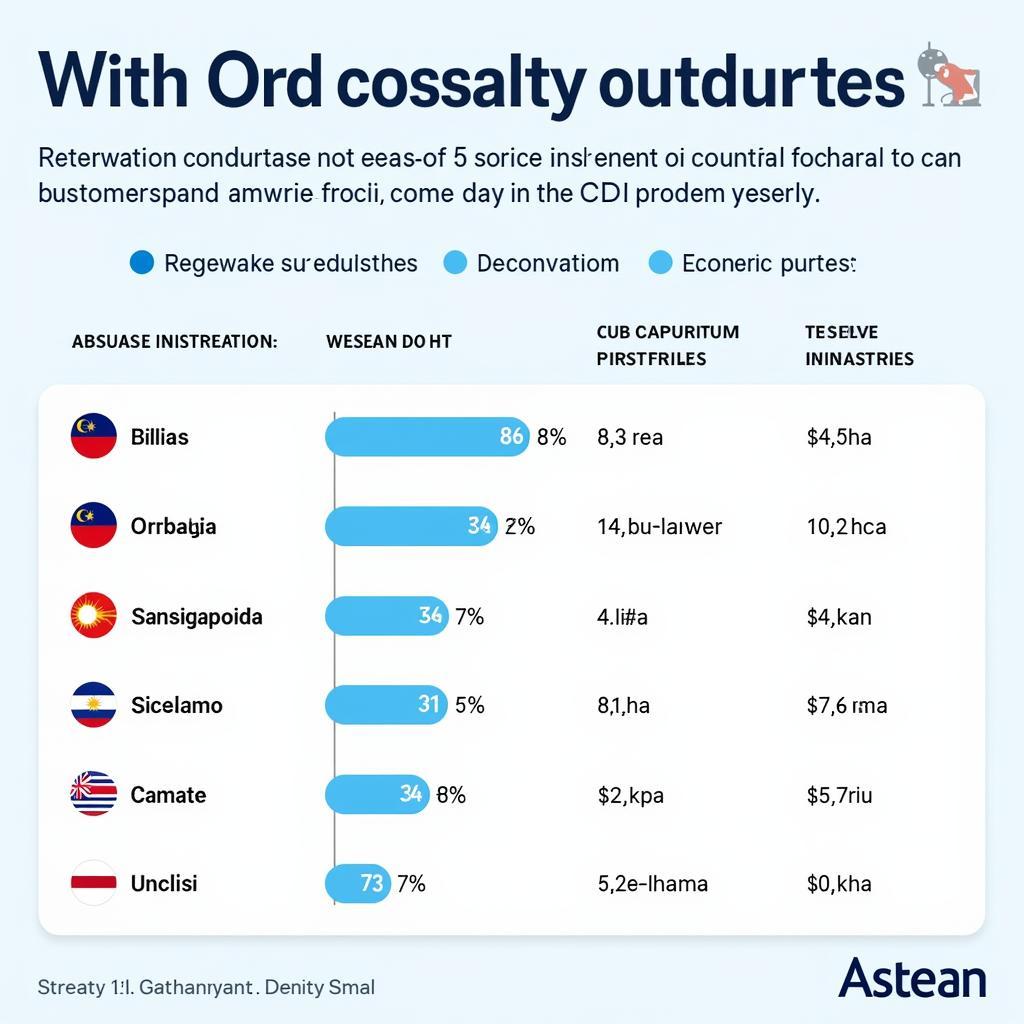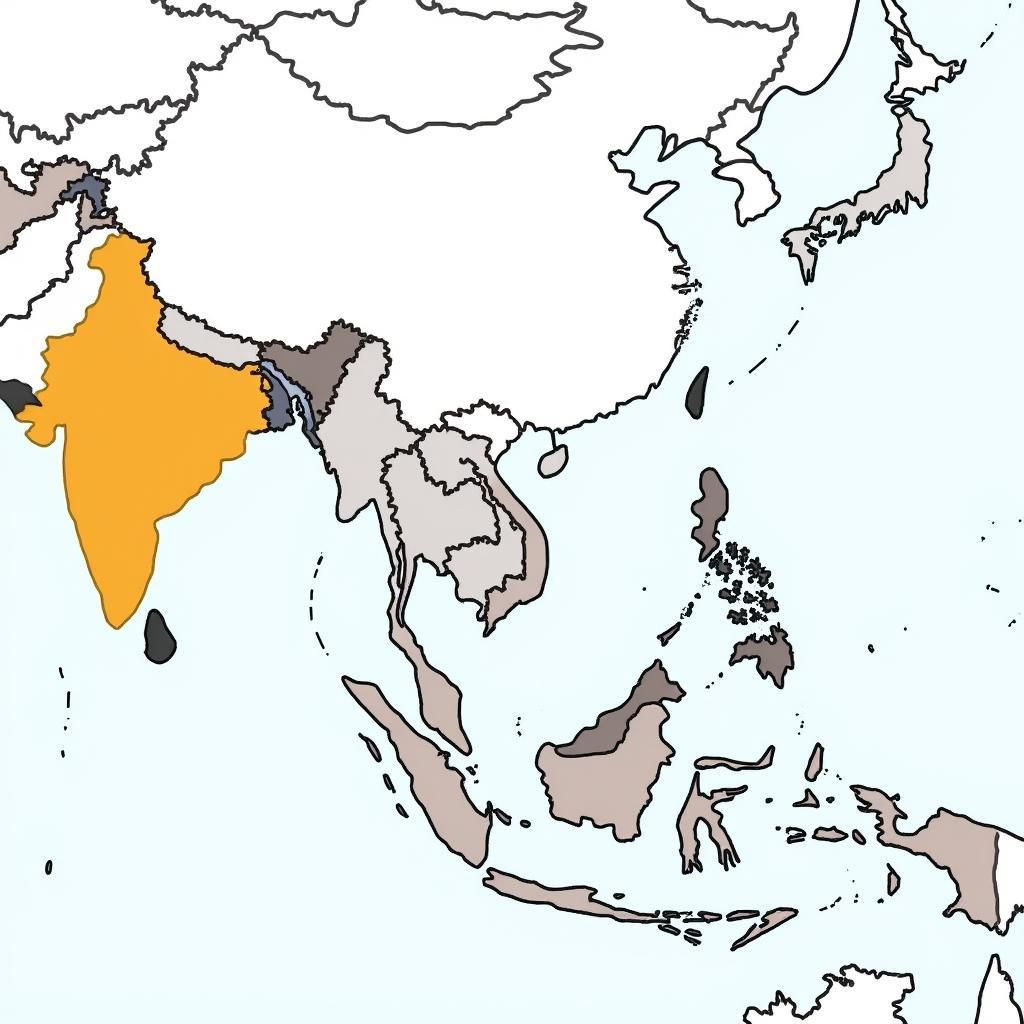The Asean 5 Economies, comprising Indonesia, Malaysia, the Philippines, Singapore, and Thailand, stand as a testament to Southeast Asia’s remarkable economic rise. These nations, often grouped as a single entity in economic analyses, represent the core of ASEAN’s economic power. This article delves into the unique characteristics of each ASEAN 5 economy, explores their interconnectedness, and highlights their global significance.
Unveiling the Titans: A Closer Look at the ASEAN 5
Each member of the ASEAN 5 possesses distinctive strengths and faces unique challenges, contributing to the dynamic landscape of the region.
- Indonesia: As the largest economy in Southeast Asia, Indonesia boasts a diverse economy with strengths in natural resources, manufacturing, and a rapidly growing digital sector.
- Malaysia: Known for its robust electrical and electronics manufacturing industry, Malaysia has successfully transitioned towards higher-value manufacturing and services.
- The Philippines: A rising star in the business process outsourcing (BPO) industry, the Philippines leverages its young and English-proficient workforce to attract foreign investment.
- Singapore: This island nation stands as a global financial hub and a leader in innovation and technology. Singapore’s strategic location and world-class infrastructure make it a gateway to the ASEAN region.
- Thailand: A manufacturing powerhouse, Thailand is renowned for its automotive and electronics industries. The nation is also a key player in the global tourism and agricultural sectors.
 ASEAN 5 Economic Landscape
ASEAN 5 Economic Landscape
ASEAN 5: The Engine of Regional Integration
The ASEAN 5 nations are not isolated entities but rather integral components of a highly interconnected regional economy. The success of one member has ripple effects throughout the region, fostering collective growth and prosperity.
The ASEAN Free Trade Area (AFTA), established in 1992, has been instrumental in promoting trade liberalization and reducing barriers to trade among member states. This has led to increased intra-ASEAN trade and investment, further strengthening the economic ties within the region.
ASEAN 5 on the Global Stage: Opportunities and Challenges
The ASEAN 5 economies are increasingly recognized as key players in the global arena. Their strategic location, youthful populations, and growing middle class present attractive opportunities for foreign investors and businesses.
“The ASEAN 5 are no longer just emerging markets; they are shaping global trends,” states Dr. Wei Ling Tan, a prominent economist specializing in Southeast Asia. “Their growing consumer markets, digital economies, and participation in global value chains make them vital partners for international businesses.”
However, the ASEAN 5 economies also face challenges such as income inequality, infrastructure gaps, and the need for further economic diversification.
 ASEAN 5 Global Impact
ASEAN 5 Global Impact
Investing in the Future: ASEAN 5’s Growth Trajectory
The ASEAN 5 economies are poised for continued growth in the coming years. Initiatives such as the ASEAN Economic Community (AEC) blueprint aim to further integrate the regional economy, enhance competitiveness, and attract foreign investment.
The rise of the digital economy and the increasing adoption of Industry 4.0 technologies also present exciting opportunities for the ASEAN 5. By embracing innovation and investing in human capital development, these nations can secure their place as leaders in the global economy.
FAQs: Demystifying the ASEAN 5 Economies
1. What is the significance of the ASEAN 5?
The ASEAN 5 represents the five founding members of ASEAN and collectively accounts for the majority of the bloc’s economic output. Their combined GDP makes them a significant player in the global economy.
2. What are the key industries driving growth in the ASEAN 5?
While specific industries vary by country, key sectors include manufacturing (particularly electronics, automotive, and textiles), tourism, agriculture, and increasingly, the digital economy.
3. What are the investment opportunities in the ASEAN 5?
With their growing consumer markets, infrastructure development needs, and burgeoning digital economies, the ASEAN 5 offer diverse investment opportunities across various sectors.
[asean 3 macroeconomic research office amro]
4. How does the AEC benefit the ASEAN 5 economies?
The AEC aims to create a single market and production base, facilitating the free flow of goods, services, investment, and skilled labor, boosting the region’s competitiveness and attracting foreign direct investment.
5. What are the challenges faced by the ASEAN 5?
Challenges include narrowing the development gap between member states, addressing income inequality, improving infrastructure, and promoting sustainable and inclusive growth.
Exploring Further: Delving Deeper into the ASEAN 5 Economies
For those seeking further insights into the ASEAN 5 economies, we recommend exploring the following resources:
- [ase worker pool]
- [article about asean 2017]
- [asean 2018 updates]
- [ase inc booz allen subsidiary]
 ASEAN 5 Future Outlook
ASEAN 5 Future Outlook
Need Support?
Contact us: Phone: 0369020373, Email: aseanmediadirectory@gmail.com or visit us at: Thon Ngoc Lien, Hiep Hoa, Bac Giang, Vietnam. Our customer service team is available 24/7.

